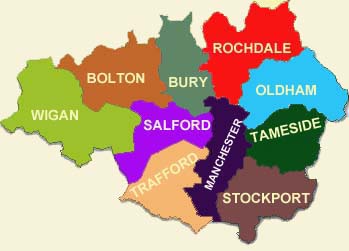|
A Brief
Salford History
When the Casson and Berry Map of
Manchester and Salford was published in 1751,
Salford was little more than a village on the banks
of the River Irwell. As you can see on the
map, one bridge crossed the river in the vicinity of
the "Christ Church" in Manchester. On the
Salford side, what is now Chapel Street was called
Salford Street and Sacred Trinity Church can be seen
amidst fields and a cluster of buildings.
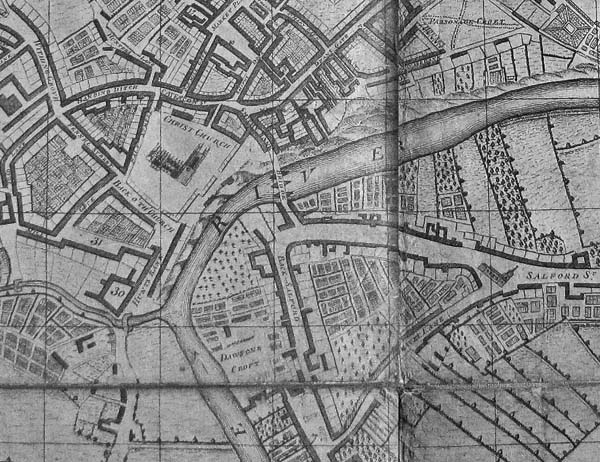 The images above and below are
taken from a copy of the Casson & Berry Map held
at Chetham's Library and shown here with their
permission.
During the Industrial Revolution,
Salford like its neighbour Manchester experienced a
population explosion. People moved into the
cities to work in the textile industry.
In the 1840s Friedrich Engels was
living and working in Manchester. Between 1844
and 1845 he wrote his book, "The Condition of the
Working Class in England" and in the section of "The
Great Towns" he had this to say about Salford,
"If we cross the Irwell to Salford, we find,
on a peninsula formed by the river, a town of
80,000 inhabitants, which, properly speaking, is
one large working man's quarter, penetrated by a
single wide avenue. Salford, once more
important than Manchester, was then the leading
town of the surrounding district to which it
still gives its name, Salford Hundred.
Hence it is that an old and therefore very
unwholesome, dirty, and ruinous locality is to
be found here, lying opposite the Old Church of
Manchester, and in as bad a condition as the Old
Town on the other side of the Irwell."
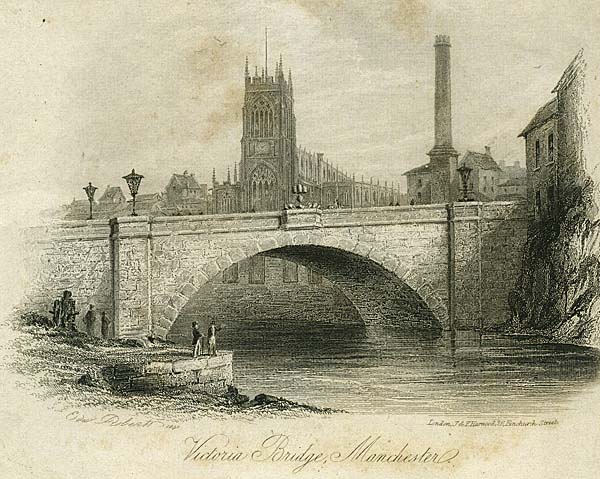 "All Salford is built in courts or narrow lanes, so narrow that they remind me of the narrowest I have ever seen, the little lanes of Genoa. .... The narrow side lanes and courts of Chapel Street, Greengate and Gravel Lane have certainly never been cleansed since they were built." Salford's involvement in this Industrial revolution was further cemented when the Manchester Ship Canal was completed in 1894 and an extensive system of docks were built on the Salford side of the canal. 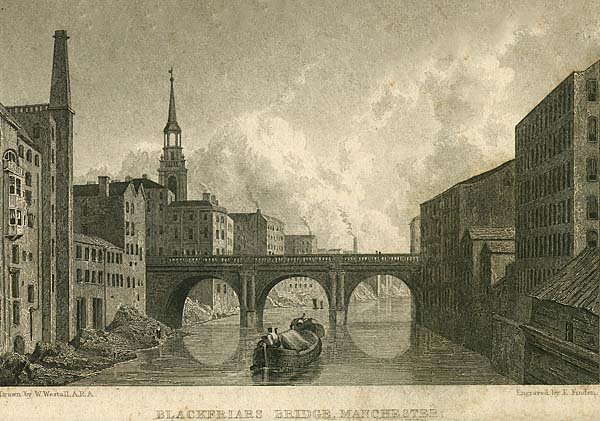 The same bridges that Engels
crossed between the twin cities are still in place
carrying the residents of both back and forth daily
between work and home.
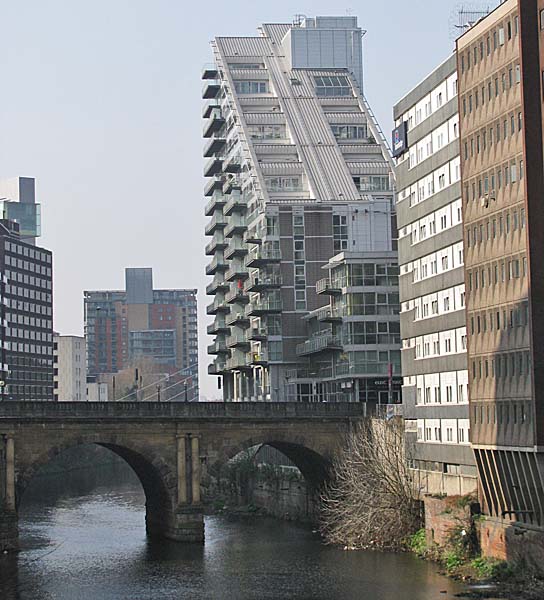 In 2013 the city of Salford is a
very different city. It covers 37 square miles
and is made up of five districts: Salford,
Eccles, Worsley, Irlam and Cadishead, and
Swinton and Pendlebury. The Salford Council
website adds that, "Some 220,000 people are proud to
call Salford their home." They add that,
"Salford is a city constantly changing and moving
into an exciting future as a thriving cultural,
economic and residential location. From urban
buzz to greenbelt tranquility, Salford is building
on the mixture of its waterfront, urban and
countryside environments to create places where
people want to live, work, invest and visit."
From an administrative point of
view Salford is today one of the ten regions
within Greater Manchester.
|
